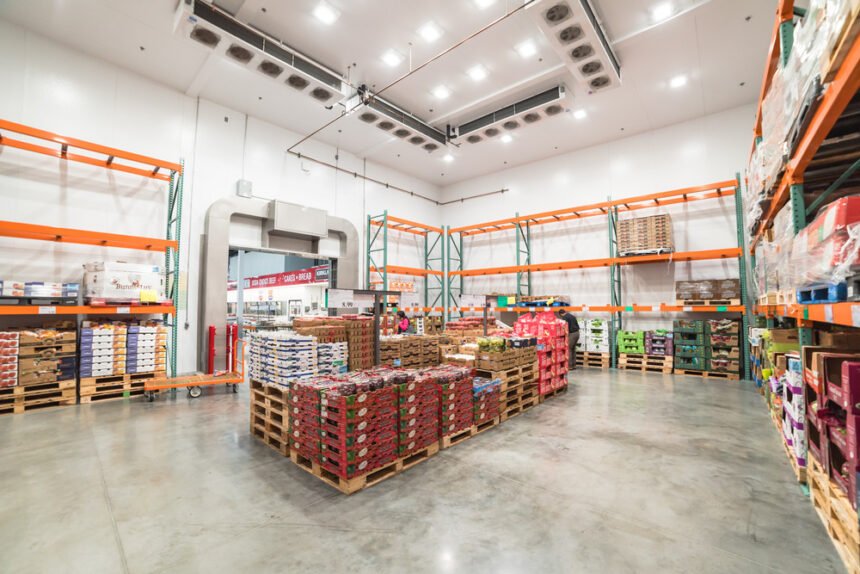The rise of big data adoption by enterprises has seen analytics be applied to various areas of business. Supply chains, for instance, have greatly benefited from these efforts. Companies have been able to log data on product movement and, by analyzing these, they are able to streamline many of their logistics processes. For example, retail giant Walmart uses data gathered from its fleet’s activities to optimize supply chain routes, allowing the company to move products more efficiently and keep transportation costs down.
One specific area of supply chain management on which data and analytics can potentially have more positive impact is cold chains. Cold chains are essential to companies that deal with volatile or perishable goods like those in the food, medication, and healthcare. The controlled climate helps them ensure that their products reach customers in the best state possible.
Unfortunately, inefficiencies in cold chains still lead to waste of goods amounting to billions of dollars. In response, companies are now adopting technology solutions to better monitor cold chain shipments and manage their supply chains in hopes of solving this issue. The use of digital tools enables them to generate and gather more granular data about what exactly happens in their cold chain. The information, in turn, can fuel data and analytics efforts, resulting in better strategies to run more effective cold chains.
Challenges in Cold Chain Management
Many of the challenges faced by cold chains stem from the nature of goods that they handle. Food and medicine have to be kept within controlled conditions or else they may degrade or spoil. Since bad food or drugs can also cause health issues, these goods are also regulated. Health and safety guidelines list specific temperature ranges in which they must be kept. Should they be exposed to conditions outside these ranges, the products may be considered unfit for consumption and have to be discarded or destroyed.
Cold chains have seen positive developments that have helped organizations handle the larger volumes of goods that markets now demand. Refrigeration and climate control technology are now more efficient and compact, allowing them to be installed in virtually all types of facilities, vehicles, and containers. Despite this, temperature excursions or deviations from the required climate conditions can still occur in any shipment due to factors such as delays in transportation, faulty equipment, mishandling by personnel, and inadequate packaging.
As such, supply chains should be able to get accurate and timely information about what transpires throughout a product or package’s journey. Only through reliable information can companies get a clear idea of how they can further improve.
How Tech and Data Can Help
To achieve this, companies can adopt technologies that can track and monitor their shipments. Individual packages can now be equipped with tags and trackers that can log various condition data including temperature, humidity, light exposure, physical shock, and location. These factors are helpful in determining potential issues in these individual packages.
Information from these tags can be extracted through readers and scanners as they reach each stage of the journey. The data can be also sent online to databases and cloud data storages, allowing companies to access information in real time. Through such mechanisms, excursions can be identified immediately. If a package is verified to have been exposed to harmful conditions, shippers can decide to process returns immediately before the shipment moves further down the chain.
By tracking each individual package, companies also get to collect more data for use in their analytics efforts. Shipping condition data can help identify at which point of the chain excursions actually occur, how often they are, and what causes them. Companies can use insights from the data to better plan routes. The fewer touch points that products have to go through in the chain, the fewer chances are there for shipment to be delayed and mishandled.
Insights can also help organizations build stronger networks and more resilient processes. Data can reveal which partners are underperforming or are causing issues, enabling companies to find better suppliers and providers to be part of their cold chains and improve the quality of their respective processes. The information can even be correlated with other information such as costs, helping them identify which incidents are the most costly to deal with. This way, companies can prioritize the issues that need to be addressed.
Turning Insight into Action
Companies get to benefit from analytics when they can take concrete action. In the case of cold chains, it’s about being able to make the necessary strategic and tangible changes to optimize activities and cut down on waste. The mechanisms to monitor cold chains effectively are now available, making it possible for analytics efforts to work on cold chain improvements. Considering that cold chains are responsible for delivering essential and even life-saving goods to people, any development that leads to safer and more effective products should be to everyone’s benefit.

